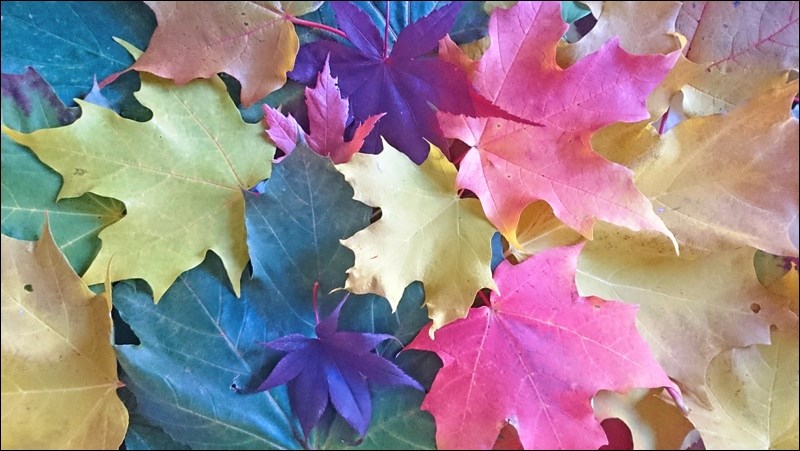Maple trees belong to the genus Acer and there are more than 100 species of maples around the world..
The Striped maple (Acer pensylvanicum) is an understory tree that is distinct because of its green and white striped bark that allows the tree to photosynthesize better in the shade and even before the leaves appear in spring. It also has a common name of moosewood as both moose and deer like to browse the twigs in winter. The autumn colour is yellow.
The Norway maple (Acer platanoides) was introduced from Eurasia in the mid-1700s as an ornamental tree. You will find it in southern British Columbia and from southern Ontario to Newfoundland. It is considered a threat to other maples as it leafs out earlier, retains its leaves for longer and has prolific seed production and germination. It grows in dense stands and the leaves release toxins that will affect the soil fungi and microbes and easily out competes trees like the sugar maple and red oak.
On the prairies, the Manitoba maple (Acer negundo) is the most common large frame maple. They are without doubt the best tree for children to climb on as they have long spreading limbs that allow easy climbing. They also have a large area where they are found, from southern Manitoba to Ontario and south to Florida and New Mexico. It is rather shallow-rooted and short-lived. Poor weather conditions like wind and ice easily damage the structure as they have weak v-shaped crotches that will break in inclement weather.
The Big Leaf or Oregon maple (Acer macrophyllum) is only found along the western coast of British Columbia and have leaves that are up to 60 centimetres wide. It is an opportunistic maple as it is often one of the first trees to grow on a new site or clearing.
One of the nicest maples to grow is the Amur maple (Acer ginnala). It is a tree of smaller stature and only grows to about 18 feet high and is multi-stemmed with a nice rounded form. Amur Maple is an introduced species from Asia that was first grown in the 1930s in North America. It is best planted in full sun and is graced with red samara (seed structure). This is a great tree that is truly beautiful and is perfect for smaller landscapes.
The Silver maple (Acer saccharinum) is the only maple which is not susceptible to aphids and thus for that reason alone is a good choice for our landscapes. It is a large tree with an oval crown and is also fast growing.
Japanese maple is not only a beautiful landscape tree, but for those of us who are living in more severe climates it is an option for an indoor/outdoor environment. One of the classic Japanese maples bear deeply cut, feathery red-purple leaves that turn a brighter crimson in fall. Acer palmatum (Dissectum AtropureumL or Lace Leaf Japanese maple is a great selection for your backyard in the summer and the solarium in the winter. There are a host of different Japanese maples that you may try and for sure they will each bring much to your landscape.
— Hanbidge is a horticulturist with the Saskatoon School of Horticulture and can be reached at 306-931-GROW(4769); by email at growyourfuture@gmail.com; facebook: @schoolofhort; twitter: @hortiuclturepat; instagram: patyplant or check out our website at saskhort.com



